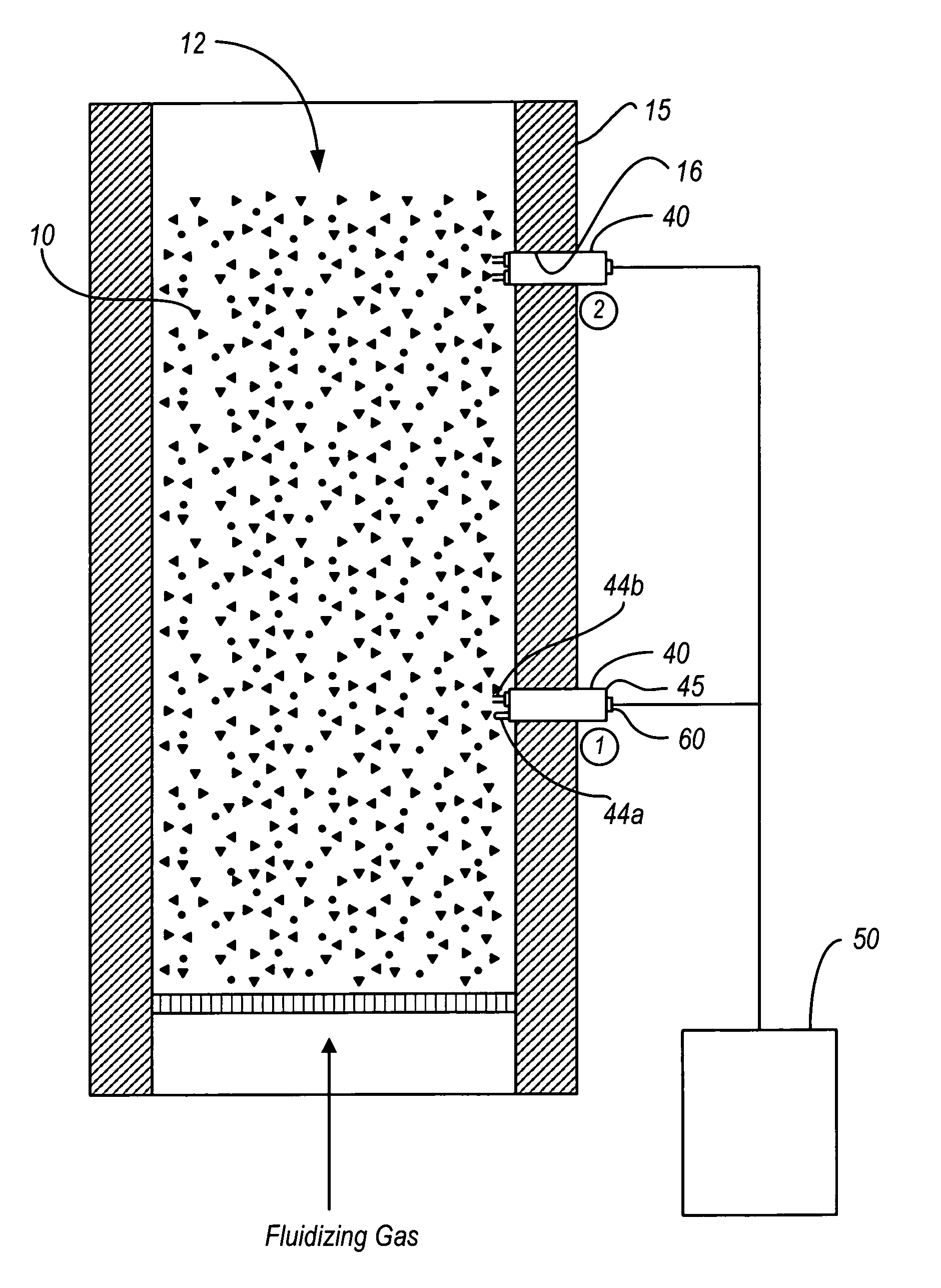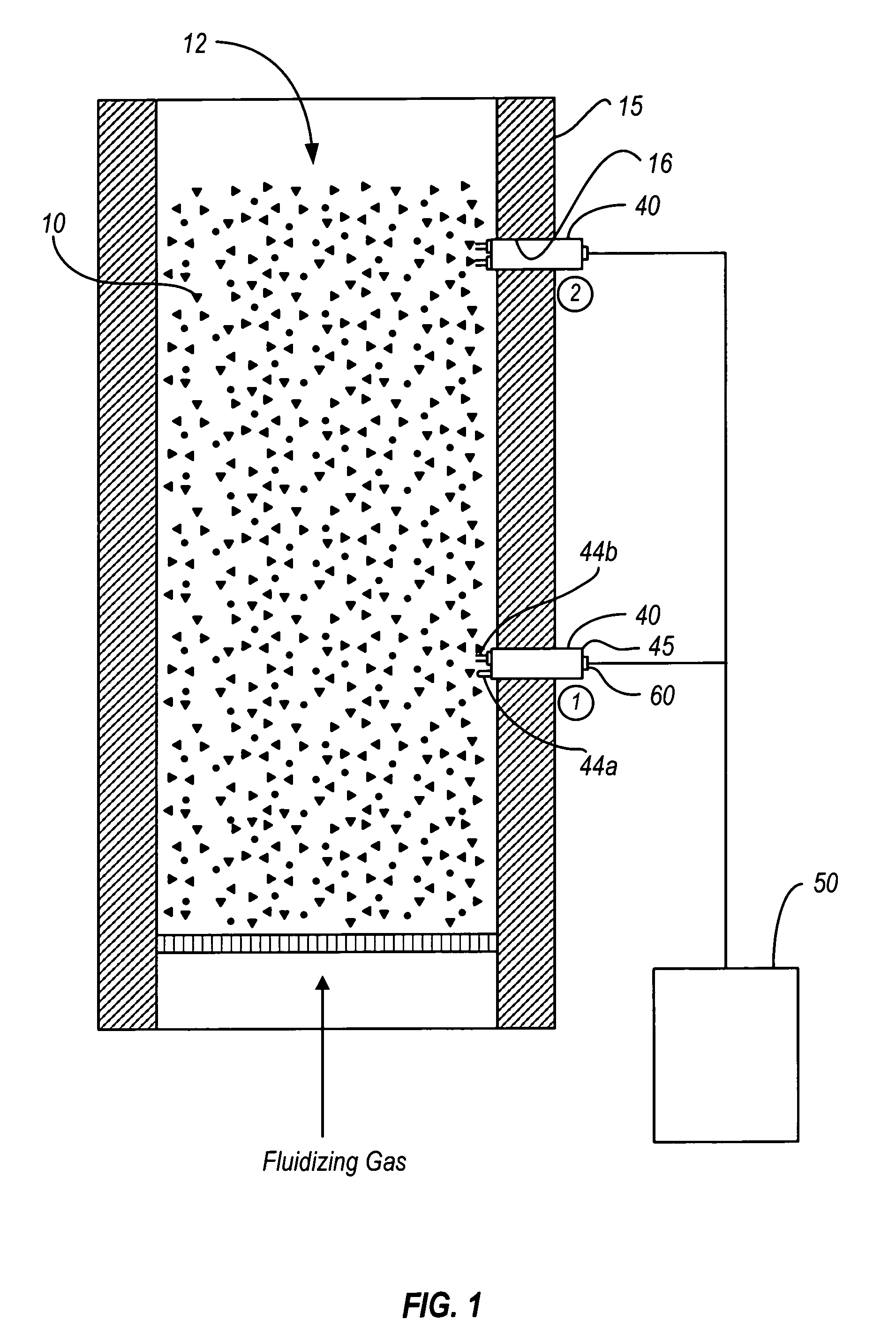Systems and methods for monitoring solids using mechanical resonator
a mechanical resonator and solids technology, applied in the direction of using mechanical means, process and machine control, disinfection, etc., can solve the problems of fluidized bed collapse, agglomeration, sheeting, and difficult to anticipate problems such as fluidized bed collapse, and achieve cost-effective and efficient monitoring or characterization.
- Summary
- Abstract
- Description
- Claims
- Application Information
AI Technical Summary
Benefits of technology
Problems solved by technology
Method used
Image
Examples
Embodiment Construction
[0041]The following paragraphs describe certain features and combinations of features that can be used in connection with each of the methods, systems and apparatus of the invention, as generally described above. Also, particular features described hereinafter can be used in combination with other described features in each of the various possible combinations and permutations. As such, the invention is not limited to the specifically described embodiments.
Preferred General Methods
[0042]A preferred general method of the invention can be described, for example, with reference to FIG. 1, in which particles 10 bounded by a barrier 15 such as a vessel are fluidized to form a multi-phase system 12 comprising the fluidized particles 10 and a gaseous continuous phase. Such particles can be, for example, reaction products such as polymer particles, reaction adjuncts such as catalysts, etc., and other solid particles. One or more mechanical resonators (designated generally collectively using...
PUM
| Property | Measurement | Unit |
|---|---|---|
| frequencies | aaaaa | aaaaa |
| superficial gas velocity | aaaaa | aaaaa |
| superficial gas velocity | aaaaa | aaaaa |
Abstract
Description
Claims
Application Information
 Login to View More
Login to View More - R&D
- Intellectual Property
- Life Sciences
- Materials
- Tech Scout
- Unparalleled Data Quality
- Higher Quality Content
- 60% Fewer Hallucinations
Browse by: Latest US Patents, China's latest patents, Technical Efficacy Thesaurus, Application Domain, Technology Topic, Popular Technical Reports.
© 2025 PatSnap. All rights reserved.Legal|Privacy policy|Modern Slavery Act Transparency Statement|Sitemap|About US| Contact US: help@patsnap.com



